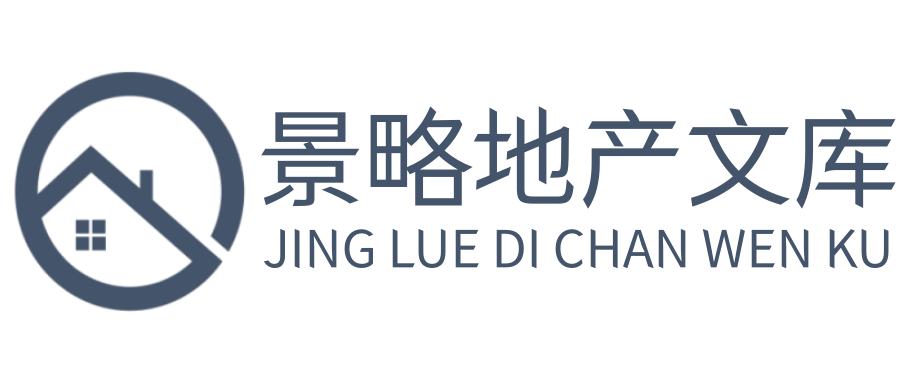1、Financial Services PracticeReshaping retail banks:Enhancing banking for the next digital ageThe current model of universal retail banking is unsustainable in the digital world.Banks will need to reinvent themselves,focusing on businesses where they can achieve and extend market leadership.October 20
2、22 Jorg Greuel/Getty ImagesThis article is a collaborative effort by Ashwin Adarkar,Stefano Cant,Klaus Dallerup,Vito Giudici,Enrico Lucchinetti,and Zaccaria Orlando,representing views from McKinseys Financial Services Practice.Retail banks have experienced respectable growth as the pandemic has abat
3、ed,and it is tempting to declare that the state of global retail banking is healthy.However,taking a disaggregated view reveals the unsustainable economics of the universal banking model,in which an institution offers a full range of financial services,from daily banking(deposit accounts,payments,an
4、d credit cards)to more complex lending,wealth management,and even insurance.To supercharge their financial performance and defend market share,banks will need to target profit pools in specific businessesdaily banking activities,navigating life events,or building and protecting wealthwhere they can
5、define and deliver a value proposition that can win in our new digital age.While much has been made of the threat from fintechs and Big Tech,we believe incumbent banks will continue to lead in retail banking.Banks running the old playbook,however,will not survive;the new winners will operate like te
6、ch companies,with advanced data capabilities,a cutting-edge tech stack,and an agile operating model.Banking has rebounded but faces severe challengesWith profit pools surpassing$680 billion,according to McKinseys Global Banking Pools,global retail banking delivers 48 percent of total banking profits
7、 and is larger than entire sectors such as pharmaceuticals/chemicals,telecommunications,and food manufacturing.Banking overall has rebounded from the shock of the pandemic:total shareholder returns(TSR)of the worlds top ten banking groups in January 2022 were 20 percentage points higher than in Janu
8、ary 2020.While the TSR for these banks have edged downward recently due to macroeconomic uncertainty,they remain in line with prepandemic levels.The average return on equity(ROE)for global banking has also improved steadily from the second quarter of 2020 and is projected to continue climbing above
9、the ten-year average of 8.9 percent(Exhibit 1).Despite the signs of recovery,banks must take a disaggregated view of retail businesses and understand the variation in the profitability of their major product groups.Differences in the profitability of key retail banking businesses have always existed
10、 to some extent,depending on the market,and daily banking has often served as the foundation for building lifetime relationships that generate revenue from mortgages and from wealth and protection services1 to subsidize the cost of daily banking.However,with digital entrants focusing hypercompetitiv
11、e value propositions on highly attractive customer and product segments,the universal model is threatened.Absent this 1“Wealth and protection”is shorthand for two types of services:(1)wealth accumulation,management,and protection;and(2)insurance/protection.To supercharge financial performance and de
12、fend market share,banks will need to target profit pools in specific businesses where they can define and deliver a value proposition that can win in our new digital age.2Reshaping retail banks:Enhancing banking for the next digital agegranular view,a bank risks the hollowing of its profits as the m
13、ost valuable segments are cherry-picked.To succeed in this context,which leaves little margin for underperformance,it is imperative for banks to know where they make a profit and where they dont,as well as to protect and expand their most strategic revenue streams.Although the need for this type of
14、thinking is global,the severity of the challenges to the traditional model of universal banking and the implied strategic imperatives vary based on the markets served(Exhibit 2).In developed Asia,2 North America,and Western Europe,daily banking has become highly unprofitable.While rising interest ra
15、tes may help somewhat,they do not fundamentally change the situation(see sidebar,“Inflation and rising interest will not change the overall picture for banks”).Moreover,in North America,there is increasing social and regulatory pressure to limit account fees.Many banks are seeing diminishing returns
16、 on their cost reduction programs as they push against the limits of their core technology platforms and branch network configurations.In China and the emerging markets of Asia,3 where digital-first models have reached maturity and banks have shrunk their already thin branch networks by more than a
17、third in five years,daily banking revenue per customer is roughly equal to the average cost per customer.However,profit pools for complex lending and wealth and protection services are low by global standards,and challenges to incumbent banks remain as innovative Big Tech and fintech organizations c
18、ontinue growing in terms of consumer adoption and product diversification.In most retail banking markets of Latin America and the Middle East and North Africa(MENA),higher interest rates for consumer lending Exhibit 1Return on equity has been stable over the past decade and is rebounding from the sh
19、ock of the COVID-19 pandemic.Web Exhibit of Return on equity for global banking 200022,%Source:McKinsey PanoramaGlobal Banking Pools;S&P Capital IQ2022 estimated range10-year average:8.902000201020205101520250510152025Return on equity has been stable over the past decade and is rebounding from the s
20、hock of the COVID-19 pandemic.2 Includes Australia,Hong Kong,Japan,Korea,Singapore,and Taiwan.3 Includes India,Indonesia,Malaysia,Thailand,and Vietnam.3Reshaping retail banks:Enhancing banking for the next digital ageExhibit 2Daily banking includes basic products,credit cards,and unsecured loans.Com
21、plex lending includes mortgages and car loans.Wealth and protection includes wealth accumulation,insurance,and pensions.Operating expenses/assets for complex lending and unsecured loans,including credit cards.Total global operating expense(number of banked population x average number of banking rela
22、tionships).Source:McKinsey Global Banking Pools;World Bank;McKinsey analysis DailybankingComplexlendingWealth andprotectionCost toserveDailybankingComplexlendingWealth andprotectionCost toserve280390170370430210Latin AmericaMiddle East and North AfricaIn China and Emerging Asia,a digital-frst approa
23、ch has controlled costs,but complex products can be further developed.In Latin America,the Middle East,and North Africa,revenues exceed costs for now,but proftability needs to be defended from digital attackers.In developed markets,high costs are making daily banking unproftable.Revenue by product,$
24、per holder(2020 estimates)Revenue by product,$per holder(2020 estimates)Revenue by product,$per holder(2020 estimates)DailybankingComplexlendingWealth andprotectionCost toserveDailybankingComplexlendingWealth andprotectionCost toserve1902,7509101,0101,710190United StatesWestern EuropeDailybankingCom
25、plexlendingWealth andprotectionCost toserveDailybankingComplexlendingWealth andprotectionCost toserve10019029037012050ChinaEmerging AsiaCost-to-assets ratio5%Cost/incomeafter risk62%Average valueper client80 Cost-to-assets ratio4%Cost/incomeafter risk58%Average valueper client150 9050Cost-to-assets
26、ratio2%Cost/incomeafter risk77%Average valueper client460 Cost-to-assets ratio3%Cost/incomeafter risk63%Average valueper client870 550350Cost-to-assets ratio3%Cost/incomeafter risk57%Average valueper client310 Cost-to-assets ratio12%Cost/incomeafter risk60%Average valueper client330 2201704Reshaping
27、 retail banks:Enhancing banking for the next digital agecontribute significantly to per-customer daily banking revenues,which exceed the cost to serve by more than 20 percent.The main vulnerability for incumbentsparticularly in Latin American markets,where the penetration of complex lending and weal
28、th advisory is less than 10 percentis that an innovative bank or nonbank attacker might launch a compelling offering in one of the less well-penetrated product groups and scale rapidly.By comparing the average cost to serve each retail bank customer with the balance of revenues from complex products
29、 and daily banking,we have identified three regional archetypes of retail banking economics(Exhibit 3).Banks in each archetype face distinct imperatives:Europe,North America,and developed Asia.Embrace new technologyincluding a digital-first business model and hybrid-cloud core technology stackto mov
30、e to a fundamentally lower cost curve,fight attackers on innovation,and identify new sources of revenue in complex lending and in wealth and protection via end-to-end journeys and personalization.China and emerging Asia.Fight for share of wallet while also focusing on increasing the penetration of h
31、igher-value businesses,especially complex lending.Improve the economics for complex lending and for wealth and protection through product innovation and segmentation.Latin America and MENA.Leverage current profits from daily banking to defend market share against digital attackers and avoid the econ
32、omic challenges to daily banking seen in,for example,North America.This could be done either by diversifying the source of profitability within daily banking or deepening relationships with daily banking customers by cross-selling complex lending or wealth and protection services.Inflation and risin
33、g interest will not change the overall picture for banksThe cost of essential goods has risen rapidly in many parts of the world,with several economies recording the highest rates of inflation seen in decades.To combat inflation,central banks in diverse markets have been raising interest rates,and a
34、s a result,growth in bank assets and deposits will likely slow.However,higher rates should improve net interest margins on banks existing balance sheets.At the same time,higher inflation and higher loan prices may increase the risk of banks loan portfolios,especially in the mass-consumer and small-b
35、usiness segments.Looking ahead,McKinseys Banking Practice foresees two main scenarios.In the first scenario,inflation remains high in the midterm with interest rates rising too slowly to contain it,thus muting economic growtha condition known as stagflation.The second scenario is characterized by in
36、flationary growth:prices continue to rise for the next few years,and central banks raise interest rates to optimal levels,thus averting excessive constraints on economic growth.We expect that higher rates will generate additional interest income for banks but with a limited impact.In the eurozone,fo
37、r example,we anticipate an increase of approximately 2 percent in net interest income following an increase of 150 basis points in European Central Bank rates.Given the risks associated with these conditions,improving risk scoring and underwriting capabilities is crucial,not only to offer competitiv
38、e lending rates to a broader population but also to predict more accurately which customers pose a risk of default.This is particularly important for averting a possible rise in nonperforming loans(NPLs)and risk costs,in the event that economic conditions deteriorate.5Reshaping retail banks:Enhancin
39、g banking for the next digital ageThe traditional model of universal banking,with its reliance on cross-subsidization between more and less“profitable”products,generally served well in branch-centric contexts.Now,however,three key shifts are fundamentally changing the competitive environment and for
40、cing banks to compete on a digital battleground:1.Scale shift.Historically,banks achieved scale through the famous S-curve associated with branch density:if a banks share of branches in a market exceeded a certain threshold,it would gain a disproportionate share of deposits.This heuristic has broken
41、 down as other factors,such as digital share of voice or brand visibility,have become more important.4 Scale benefits have shifted from physical to digital networks,depriving incumbents of the barrier to entry afforded by robust branch infrastructure and pitting them against tech-intensive organizat
42、ions built for continuous innovation and infinite scalability.With the current economic model,even a typical megabank with a technology budget of$9 billion to$10 billion does not have the resources to compete head-to-head on innovation,speed,superior service,and pricing against a Big Tech organizati
43、on,which typically spends some$20 billion to$30 billion annually on technology.And while a megabank typically spends no more than 3percent of revenue on marketing,a neobank may spend more than 8 percent of revenue to engage with new and existing customers.5Exhibit 3Imperatives for retail banks gener
44、ally difer by region.Web Exhibit of Current positioning of macroregionsFor example,complex lending,wealth,and protection.Source:McKinsey Global Banking Pools;World Bank;McKinsey analysis Ratio of revenue from complex products to revenue from daily bankingProftability of daily banking,revenue vs cost
45、 to serveDevelopedAsia,Europe,North AmericaLatin America,Middle East,North AfricaChina,emerging AsiaImperatives for thebanking businessEmbrace new technology to lower cost curve;fght attackers on innovation;identify new sources of revenue in end-to-end journeysFight for share of wallet and strengthe
46、n higher-val-ue products through inno-vation and segmentationLeverage current profts to invest in innovation for the future before a possible shift to the frst archetypeNegativeVery high(2030 x)Limited(1-3x)PositiveImperatives for retail banks generally differ by region.4 Shital Chheda,Aditya Dhar,M
47、arukel Nunez Maxwell,and Pradip Patiath,“Customer mindshare:The new battleground in US retail banking,”McKinsey,February 2019.5 The figures in this paragraph are based on diverse sources,including expert input,company websites and press releases,and EMI Strategic Marketing analysis of Federal Financ
48、ial Institutions Examination Council(FFIEC)call reports and bank financials.6Reshaping retail banks:Enhancing banking for the next digital age2.Digital-native challengers.Digital attackers have taken the first bites out of traditional banks revenue streams.Wielding massive sets of data gathered from
49、 diverse sources and applying advanced analytics to respond in near real time to individual customers emerging needs and preferences,digital-native challengers have established a strong foothold in all areas of retail banking.According to McKinseys Global Banking Pools,fintech and Big Tech companies
50、 now capture 45 percent of gross revenues from payments,and digital investment apps handle a quarter of assets in the mass-affluent segment of$250,000 to$2 million(and are growing at twice the rate of traditional providers).According to McKinseys Payments Map,nonbanks in the United States account fo
51、r 56 percent of point-of-sale financing origination balances.Similarly,in the Nordic countries,more than 30 percent of total transaction value is originated from buy now,pay later(BNPL)service providers.3.Consumer demand for digital.Customers increasingly gravitate to digital platforms:McKinsey rese
52、arch shows that the share of global bank customers purchasing personal loans via digital channels jumped from 34 percent in 2020 to 44 percent in 2021.6 In Europe,consumer willingness to purchase diverse banking products via digital channels increased by as much as six percentage points from 2018 to
53、 2021 and by up to 15 points in the United States over the same period.Some of the biggest gains in digital sales were observed in investments,cash loans,and mortgages,7 and in these markets,the share of consumers willing to purchase financial services digitally now ranges from 60 to 80 percent.Our
54、research also shows that 75 percent of customers in Latin America and 59 percent in Western Europe are willing to share data in return for a better offer and experience.However,if banks are to convert consumer interest into digital sales,they must deliver services that meet precise needs and offer f
55、ast response times and streamlined end-to-end journeys seamlessly integrated with partner applications.With banks current cost structure and consumers increasing willingness to transact business via digital channels,many banks are ill-equipped to defend their market share on the digital battlefield.
56、Banks will need to fortify themselves with new,reimagined,fit-for-purpose value propositions and business models.This is a battle banks cannot afford to lose.Winning on the digital battlegroundAs they think about how to build a compelling offering,bank leaders should consider how recent winners have
57、 added value.Over the past decade,more than two-thirds of market capitalization has been created by payments companies(including credit card companies and payment processors),information providers(including ratings agencies,market intelligence organizations,and data and analytics companies),and fint
58、echs(Exhibit 4).Leaders in these financial services subsectors have more than tripled their valuations in the past ten years,while incumbent banks have grown by“only”49 percent.8In some respects,this should not be surprising,as the digital wave first hit in payments and information services.It is in
59、structive to see that while fintech organizations were among the winners,the majority of the value was created by incumbent payments and information service providers that innovated and adapted.Even more striking are the common themes of value creation for customers.Top performers increased value by
60、 simplifying and improving the customer experiencefor example,by transitioning from cash to electronic payments and offering more flexible point-of-sale lending and peer-to-peer paymentsand by leveraging data and analytics to deliver insights.6 Finalta Digital and Multichannel Benchmark Study,2021.7
61、 McKinsey Retail Banking Consumer Survey,2018 and 2021.8 Fintech companies have lost significant market value in recent months and face new challenges in accessing funding,as investors increasingly favor profitability over growth.Despite these changes in valuations,fintech organizations have raised
62、the bar for traditional banks.7Reshaping retail banks:Enhancing banking for the next digital ageHow customers will engage with the retail bank of the futureTo thrive in the new digital environment,banks will need to rearticulate their value proposition,bearing in mind the winners lessons on the powe
63、r of simultaneously simplifying and upgrading the customer experience and creating value through data.The historic value propositions of convenience,low cost,and personal relationships in the old,branch-centric world must be reinvented for a world of digital ecosystems.If convenience was once a matt
64、er of physical ubiquity,it now depends on mobile-first experiences enabling customers to complete tasks quickly,at any time,from anywhere.In the old world,trusting relationships were underpinned by interactions with a personal banker;today trust may be founded on transparency(for example,real-time s
65、tatus updates)and the banks use of data analytics to understand individual needs and address them with highly personalized solutions.Cost efficiency,another element of differentiation,was once achieved through operational excellence and end-to-end process discipline;in the digital world,leveraging d
66、igital scale to slash costs requires a modern architecture and cloud operating model.As banks rethink their value proposition,they will need to cascade it through the business lines they prioritizedaily banking,complex lending,or wealth and protectionand develop a digital platform that supports the
67、full search-shop-manage value chain of that priority business(Exhibit 5):The daily banking platform would focus on simplifying daily shopping activities by embedding transactions seamlessly,and often invisibly,within customer journeys and giving customers fast,convenient access to diverse retailers
68、and service providers.Exhibit 4The top value creators have been information and payments providers,thanks to data monetization and improved customer experience.Web Exhibit of Market value of the top 20 frms in each category,$trillionValuation of fintechs as of July 4,2022;valuation of other categori
69、es as of September 29,2022.Source:Market data;McKinsey Fintech Investment Radar;McKinsey analysis20122.12022Information providersFintechsPaymentsIncumbentbanksIncumbentbanks5.31.72.70.60.30.11.60.450%80%+50%+50%+390%+540%The top value creators have been information and payments providers,thanks to d
70、ata monetization and improved customer experience.8Reshaping retail banks:Enhancing banking for the next digital age The home and life events(or complex lending)platform would increase customer value through ecosystem partnerships supporting end-to-end journeys for major life undertakings,from searc
71、h and selection to financing and ongoing management and maintenance.The platform for wealth and protection services would compete on the appropriate use of customer data to deliver hyperpersonalized advisory support,enabling investors to make well-informed decisions about increasing and protecting w
72、ealth over decades.One of the key challenges in the digital environment is to create customer experiences that are strong enough to make customers want to use more digital services.Our research shows that banks often fail to engage adequately with customers who express a willingness to purchase new
73、services through digital channels,9 particularly mobile.Banks must ensure that customers can use the mobile app to complete practically all banking activities,including tasks that once would have required a visit to a branch.Our research indicates that for complex transactions,most customers will ex
74、pect human support and advisory services on demand through a variety Exhibit 5Banking models centered around customer journeys allow for expanded engagement.Web Exhibit of Wealth and protection includes wealth accumulation,insurance,and pensions.Source:McKinsey analysisEnd-to-end banking models and
75、touchpointsSearchDaily lifeBasicproductsTravelBank accountDebit cardsCredit cardsBanking customer journeyPersonal loansEvaluate Acquire/fnanceUse Discard/renewHome and life eventsCarsHousingCar loansCar leasingMortgageWealth and protection1AccumulationProtectionInvestmentproductsProtectionproductsTo
76、days retail banking focusFuture of retail banking12345Simplify tasks:customers expect their daily fnances to be embedded invisibly into their daily life,and they dont mind that banks collect and use data to make the journey entirely hassle freeIncrease value to customer:customers want to be supporte
77、d throughout the entire journey(eg,housing)not just the fnancing but also through partner platforms in an ecosystem logicLeverage data for personalization:customers expect next-level hyper-personalization in order to make decisions that will leave them safe and protected Banking models centered arou
78、nd customer journeys allow for expanded engagement.9 See,for example,Sonia Barquin,Eric Buntoro,Vinayak HV,and Ignes Pricillia,“Emerging markets leap forward in digital banking innovation,”McKinsey,September 2021.9Reshaping retail banks:Enhancing banking for the next digital ageof channels,including
79、 video calls and online chat.Some will prefer in-person consultation at a branch or advisory center.To create superior customer experiences,it will be crucial to design entirely new journeys with minimal steps,rather than simply digitizing existing journeys.10What is more,each of the three business
80、models shown in Exhibit 5 will enable the bank to engage more frequently and deeply with customers by expanding core offerings from accounts,transactions,and financial advisory to include digital platforms where consumers can conduct business with participating merchants and service providers.As an
81、example,to support customers in navigating life events through a complex lending platform,banks can simplify end-to-end journeys for major life events such as buying a home or automobile or pursuing an education.A bank-owned housing platform would serve as a one-stop shop addressing all links in the
82、 value chain,including property search,virtual and in-person tours,choice of and communication with a real-estate agent,mortgage financing,hiring of contractors(for pre-move repairs or renovations)and movers,and assistance in preparing the property for rental.Such a platform would deliver distinctiv
83、e value to customers in three main ways.It would provide access to service providers who have been rigorously vetted by the bank and rated by platform users.It also would increase transparency across the full home-buying journey.Finally,it would offer competitive mortgage rates and personal assistan
84、ce with the loan application journey.Banks can also leverage customer data collected through the housing platform to help service providers deliver personalized offers to home buyers and owners.Each of the three models,if executed successfully,could provide a much-needed boost in profitability for r
85、etail banks,with target cost-to-income(C/I)ratios between 40 and 50 percent(Exhibit 6).Cost reduction levers would differ for each model but would include optimization of branch networks and maximum automation of customer acquisition and onboarding,credit underwriting,servicing,and more.In addition
86、to increased product penetration across the customer base,income levers include new revenue streams with ecosystem partners.The adoption of platform-based business models will unleash a kind of internal disruption,requiring banks to give up revenue in some areas as they position themselves for fast
87、growth in the target business.Traditional sources of revenue,including net interest margins,transaction fees,and commissions on securities trading,could shrink as banks compete on price to draw users to their platforms.Banks offering a merchant-financed deferred-payment option may need to tolerate a
88、 weakening in consumer lending volumesa worthwhile trade-off if this option sufficiently increases their platforms value by providing consumers with greater choice in funding purchases and merchants with tools to boost sales.Further,banks that focus their transformative investments on a single busin
89、ess may observe a decline in revenue for less well-funded businesses.As shown in Exhibit 7,our projections assume a revenue decline of 15 percent for these secondary businesses.The goal for these businesses should be to match market expectations well enough to prevent customers from leaving the bank
90、,as they may respond favorably to personalized offers from the high-growth business.It may be counterintuitive to take steps that lead to the shrinking of reliable revenue streams;however,the gains to be made by focusing investments on a carefully defined platform business far outweigh the forgone r
91、evenue.Operate like a tech companyTo win on the digital battlefield,banks will need to work like a tech company to deliver a platform-based value proposition.Banks are at varying stages in their technology transformations,and now 10 Sergey Khon,Ahmed Nizam,David Tan,and Zubin Taraporevala,“Best of b
92、oth worlds:Balancing digital and physical channels in retail banking,”McKinsey,July 2022.10Reshaping retail banks:Enhancing banking for the next digital ageis the time for leaders to take advantage of strong financials and double down on three key capabilities essential to a platform-based business
93、model:leveraging data for personalization and stronger customer engagement a cutting-edge technology stack to reduce costs and speed up innovation an agile operating model to respond to fast-changing marketsThese key capabilities are crucial to each retail banking business line,and it is important t
94、o approach them holisticallythat is,to adopt the customer perspective in taking inventory of the full range of the end-to-end journeys that have the most impact on value creation and customer experience.According to McKinsey research,companies that design their Exhibit 6Banks can lower cost and inco
95、me ratios to 4050 percent by developing value propositions for one of three specialized business models.Web Exhibit of Global projected average revenue per customer after risk,$Total global operating expense(number of banked population x average number of banking relationships).Wealth and protection
96、 includes wealth accumulation,insurance,and pensions.Source:McKinsey Global Banking Pools;World Bank;McKinsey analysisCost reduction with branch network optimizationBanking functionality seamlessly embedded within customer journeysAdditional revenue from marketplace services(eg,commissions,ad revenu
97、e):$40 per customerIncrease product penetra-tion in customer base Complex lending-centered vertical platform or market-placeExpansion with ancillary end-to-end solutions for life events:$100 per customerIncrease customer base pene-trationCost efciency and increased penetration with personalized digi
98、tal advisoryExpansion of ofering(eg,nonlife insurance):$90 per customerAdditional revenuefrom adjacenciesWealth andprotectionComplex lendingDaily banking14214219316790767676402757634210090903473856605832020202720272027Average banktodayBank focused on dailylifeBank focused on homeand life eventsBank
99、focused on wealthand projectionKey initiativesCost to serve per customerCost-to-income ratio24020027022070%50%40%40%Banks can lower cost and income ratios to 4050 percent by developing value propositions for one of three specialized business models.11Reshaping retail banks:Enhancing banking for the
100、next digital agetechnology transformation to deliver measurable business outcomes aligned with enterprise strategy earn a higher return on investment.11Leveraging data for personalization and stronger customer engagement Retail banks must become rigorously customer centric and match leading tech com
101、panies in extracting insights from customer data.Thus far,banks have been slow in learning how to use their unparalleled stores of customer data to leap ahead of new challengers.Crucially,banks have real advantages against Big Tech in terms of customer engagement and data;for example,52 percent of c
102、ustomers report engaging with their bank weekly or more often,while only 22 buy on Amazon that often(Exhibit 7).However,banks have yet to extract the full value of data assets,as they have not tapped all types of customer data.They should act fast while the window of opportunity is still open.The st
103、akes could not be higher.To compete for data on an equal footing with technology companies,banks will need a comprehensive data infrastructure to support data collection,storage,and advanced analytics,as well as a digital marketing engine to translate analytical insights into personalized messages t
104、hat anticipate individual customer needs and intentions.This ability to identify individual customer needs and intentions in the moment,at scale,and deliver highly personalized messages to the customer at the right time through the preferred channel is what we mean by“customer centricity.”In collect
105、ing and using customer data,banks have a window of opportunity to compete with Big Tech organizationsat least now.Web Exhibit of Customers digital engagement with primary banks mobile app or website and Amazon,%of respondents(n=1,049)Extent of companies access to customer dataQuestions:How often do
106、you use your primary banks mobile app or website?How often do you buy things from Amazon?Source:McKinsey People and Money Survey;expert inputPrimary bankAmazonWeekly ormore often223730105215211312 timesa monthOnce everyfew monthsNever2.4xFinancial transactionsCredit history/credit-worthinessPersonal
107、 data and unique identifersLocationand device informationPurchase behavior(goods and experiences)Statedpreferences and opinionsOnlineactivity and interactionsSocial/professional network and activityBanks/fnancial institutionsBig Tech companiesExhibit 7In collecting and using customer data,banks have
108、 a window of opportunity to compete with Big Tech organizationsat least now.11 Anusha Dhasarathy,Ross Frazier,Naufal Khan,Kristen Steagall,“Seven lessons on how technology transformations can deliver value,”McKinsey,March 2021.12Reshaping retail banks:Enhancing banking for the next digital ageBuildi
109、ng these data capabilities is,admittedly,a massive undertaking.It also pays dividends many times over.For example,at banks that have leveraged cutting-edge engagement capabilities to strengthen customer loyalty,weve seen satisfaction ratings improve by up to eight times among high-value customers at
110、 risk of attrition,and intention to leave the bank has declined more than 50 percent.A cutting-edge technology stack to reduce costs and speed up innovation Each of the main retail banking business models requires an IT infrastructure that is flexible,scalable,and resilient.Such an infrastructure is
111、 capable of handling significant variations in demand for streaming and processing capacity and delivering new solutions through fast innovation cycles.In the process of designing the new architecture,the initial challenge is deciding which components should be developed in-house to strengthen compe
112、titive differentiation and which elements of the infrastructure can and should be outsourced to reduce the cost and the risk of service interruptions attendant to updates and upgrades.It is also crucial to identify which applications will be licensed“as a service”from third parties and integrated wi
113、th in-house systems using APIs.In previous decades,most banks were inclined to own and develop in-house as much of their technology as possible.However,todays cloud services have reached a level of maturity and accessibility that affords banks diverse options for meeting the requirements of a maxima
114、lly automated,digital-first business.It is crucial to seize this opportunity promptly.According to a 2022 McKinsey Global Survey of technology and business leaders,12 top-performing companies are much more likely than other companies to have pursued five of the ten key transformation moves that form
115、 part of our“tech forward”approach.This is especially true for scaling up data and analytics and changing the delivery model for IT to accelerate and stabilize the development,testing,and deployment of innovative solutions(Exhibit 8).13Rethinking a banks technology approach is an ambitious and far-r
116、eaching endeavor,and it is crucial to design each initiative to address specific end-user needs and create value.In our experience,organizations that implement their technology transformations according to carefully defined business goals can shrink time to market by more than 70 percent,to between
117、two and four weeks.They also see an average 20 percent reduction in IT costs and a 100 percent improvement in developers overall productivity.All these improvements contribute to world-class user experiences.An agile operating model to respond to fast-changing markets The digital environment changes
118、 as fast as new code can be written and innovative applications downloaded by the millions.Winning banks will develop speed as a core competitive advantage.They can do this through two main avenues:implementing an agile operating model and managing a carefully planned migration to the new mix of tal
119、ent and skills required to win.Banks must push ahead with their transition to an agile culture,removing barriers to cross-functional collaboration and creating semi-autonomous teams that can deliver solutions quickly in alignment with enterprise strategy.Consistency in roles,communication,and work p
120、atterns across teams enables an organization to reallocate funding and form new teams quickly as new opportunities and priorities arise.14Sustaining this more dynamic operating model while adapting to a new,more digital environment will require a dramatic shift in banks skill profiles away from proc
121、essors and toward problem solvers.For example,as branch operations migrate from service 12 Anusha Dhasarathy,Ross Frazier,Naufal Khan,and Kristen Steagall,“Prioritizing technology transformations to win,”McKinsey,March 2022.13“How to become tech forward:A technology-transformation model that works,”
122、McKinsey,November 2020.14“The five trademarks of agile organizations,”McKinsey,January 2018;Andrea Alexander,Aaron De Smet,Sarah Kleinman,and Marino Mugayar-Baldocchi,“To weather a crisis,build a network of teams,”McKinsey,April 2020.13Reshaping retail banks:Enhancing banking for the next digital ag
123、eto sales,the primary role of branch professionals will shift from teller to universal banker(Exhibit9).Similarly,banks that transition to an agile tech organization will see their ratio of developers to tech operations and infrastructure specialists flip from 1:2 to 1.5:1.Managing this migration wi
124、ll be a central challenge for banks.A crucial lever is training existing employees to become proficient in higher-value activities.With demand for new skills over the next three to five years projected to be two to four times greater than supply,upskilling existing talent will be an essential part o
125、f reinventing the bank.Moreover,our experience and research show that reskilling can be 20 to 30 percent more cost-efficient than recruiting new talent.It also strengthens employee engagement,measured in higher employee retention and customer satisfaction,which also contribute to financial performan
126、ce.15Banks will also need new models for recruiting and retention.For example,to attract developers,winning banks will look beyond compensation and other incentives,focus on removing day-to-day pain points,and create a great environment for developers.Currently,at most banks,putting code into produc
127、tion involves multiple approvals and manual testing,which can take days or even weeks.With a more sophisticated,integrated DevSecOps teamwhere development,security,and operations professionals work together on software development and launchtesting and refinement are automated,and committing code to
128、 production Exhibit 8Top-quartile performers are pursuing transformations much more actively than other companies.Web Exhibit of Technology transformations companies have pursued in past 2 years,%of respondentsOut of 10 technology transformation initiatives included as answer choices.Respondents who
129、 reported average effectiveness score in top 25%of sample;based on ratings of 15 key IT activities tested in survey.In 2020,n=125;in 2021,n=79.In 2020,n=487;in 2021,n=315.To better support business strategy.Source:McKinsey Global IT Survey 202102020202120202021202020212020202120202021204060800204060
130、80Top-quartile performersRespondents at all other companiesScaling data,analytics,and AIChanging ITdelivery modelEnhancing ITarchitectureDigitizing end-user experienceRedesigning techorganizationsTop-quartile performers are pursuing transformations much more actively than other companies.15“Enterpri
131、se agility:Buzz or business impact?”McKinsey,March 2020.14Reshaping retail banks:Enhancing banking for the next digital agecan be completed in minutes without manual intervention.By building a superior development culture and continually improving its ability to outpace the competition in bringing l
132、eading-edge solutions to market,the bank can increase its appeal to top talent.16Todays retail banking market is vastly different in shape and structure from the old environment,where the traditional model of universal banking was economically sound.In the new world,the winning banks will be those w
133、hich carefully choose the businesses in which they can lead and commit to building a value proposition,core technology,and operating model fit for the digital battlefield.Exhibit 9Retail banks talent needs will shift dramatically from processors to problem solvers.Web Exhibit of Composition of workf
134、orce,%Includes loan officer,financial advisor,small-business banker,personal banker,and affluent banker.Includes database administrator,research analyst,and hardware engineer.Source:Bureau of Labor Statistics;Finalta;LinkedIn;McKinsey Future of Work banking research,2020 2020Typicalretail bank2030Ma
135、rketleaders2020Typicalretail bank2030MarketleadersOthersManagementCybersecurityDevelopersIT operationsand infrastructureOthers/specialistsBranchmanagerUniversalbanker05 Teller Branch role evolution:fromspecialists to generalistsTechnology role evolution:more business value342530242065036249154764551
136、03010Retail banks talent needs will shift dramatically from processors to problem solvers.16 Santiago Comella-Dorda,Martin Harrysson,and Shivam Srivastava,“Moving beyond agile to become a software innovator,”McKinsey,September 2021.Designed by McKinsey Global PublishingCopyright 2022 McKinsey&Compan
137、y.All rights reserved.Ashwin Adarkar is a senior partner in McKinseys Southern California office;Stefano Cant is a partner in the Milan office,where Enrico Lucchinetti is a senior partner and Zaccaria Orlando is an associate partner;Klaus Dallerup is a senior partner in the Copenhagen office;and Vito Giudici is a senior partner emeritus in the Hong Kong office.Scan Download PersonalizeFind more content like this on the McKinsey Insights App15Reshaping retail banks:Enhancing banking for the next digital age

 全部分類
全部分類
 標準檢索
標準檢索
 招標公告
招標公告

 文檔庫
文檔庫

 專題庫
專題庫

 圖紙庫
圖紙庫

 標準庫
標準庫

 政策庫
政策庫

 招標庫
招標庫


 文檔庫
文檔庫

 專題庫
專題庫

 圖紙庫
圖紙庫

 標準庫
標準庫

 政策庫
政策庫

 招標庫
招標庫











